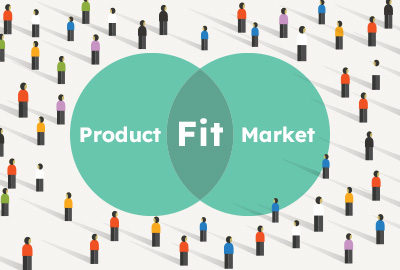This article is a part of our Comprehensive Guide to Product Marketing Success
Achieving product-market fit and validating your customer base are crucial steps in the journey of building a successful product. These concepts are often considered the holy grail of startups and established businesses alike, as they lay the foundation for sustainable growth and customer satisfaction. In this guide, we will delve into the essential elements of finding product-market fit and validating your customers, supported by real-life examples and expert insights to ensure a human touch.
Introduction
Product-market fit occurs when a product meets the needs of a specific market segment better than any alternative. It signifies that there is sufficient demand for the product, which leads to sustainable growth and profitability. Customer validation, on the other hand, involves gathering feedback from potential customers to ensure that the product meets their needs and solves their problems.
“In the end, you need to know how your customers feel. Ask them, talk to them, and most importantly, listen to them.” – Marc Benioff, CEO of Salesforce
Understanding Product-Market Fit
Finding product-market fit involves understanding the market, identifying customer needs, and iterating on your product to ensure it aligns with those needs.
Market Research
Market research is the first step in identifying product-market fit. It involves gathering data on your target market, competitors, and industry trends to understand the landscape.
Example: Before launching Airbnb, the founders conducted extensive market research to understand the needs of travelers and the shortcomings of traditional lodging options. This research informed their unique value proposition of offering affordable, local, and authentic travel experiences.
Identifying Customer Needs
Understanding your customers’ needs and pain points is crucial to developing a product that solves their problems. This involves direct interaction with potential customers through surveys, interviews, and focus groups.
“The customer’s perception is your reality.” – Kate Zabriskie
Developing a Minimum Viable Product (MVP)
An MVP is a simplified version of your product that includes only the essential features needed to solve the core problem. The goal is to validate the product idea with minimal resources and gather feedback for future iterations.
Example: Dropbox started as an MVP with a simple video demonstration of the product’s functionality. This approach helped them gauge interest and collect feedback before developing the full product.
Iteration and Feedback Loop
Product-market fit is not a one-time achievement but an ongoing process of iteration based on customer feedback. Continuously improving the product based on user insights helps in refining the product to better meet market needs.
“The biggest risk is not taking any risk. In a world that is changing really quickly, the only strategy that is guaranteed to fail is not taking risks.” – Mark Zuckerberg
Customer Validation
Customer validation is the process of testing your product concept with real customers to ensure it meets their needs and expectations.
Conducting Customer Interviews
Customer interviews are a powerful tool for gaining insights into customer needs, preferences, and pain points. Ask open-ended questions to encourage detailed responses and uncover deeper insights.
Example: Zappos, the online shoe retailer, conducted extensive customer interviews to understand the pain points of buying shoes online. This led to their decision to offer free shipping and returns, which became a key differentiator.
Creating and Testing Prototypes
Developing prototypes and testing them with potential customers helps in validating the product concept and identifying areas for improvement. Prototyping can range from simple sketches to interactive digital models.
Tools: Sketch, Figma, InVision
Example: IDEO, a design and innovation consulting firm, uses rapid prototyping to test and refine product ideas quickly. This iterative approach helps in creating user-centered designs that resonate with the target audience.
Running Beta Tests
Beta testing involves releasing the product to a limited audience outside of the company to gather feedback and identify any issues before a full-scale launch. Beta testers provide valuable insights that help in refining the product.
Example: Gmail was in beta for five years, during which time Google collected feedback from users to improve the product and ensure it met market needs before the official launch.
Metrics for Measuring Product-Market Fit
Quantifying product-market fit can be challenging, but certain metrics can provide valuable insights into how well your product is resonating with the market.
Net Promoter Score (NPS)
NPS measures customer loyalty and satisfaction by asking customers how likely they are to recommend your product to others. A high NPS indicates strong product-market fit.
“If you want to understand how your customers feel about your product, just ask them.” – Fred Reichheld, creator of NPS
Customer Retention Rate
Customer retention rate measures the percentage of customers who continue to use your product over time. High retention rates suggest that customers find ongoing value in your product.
Example: Spotify’s high retention rate is a testament to its ability to consistently deliver value to its users through personalized playlists and a vast music library.
Churn Rate
Churn rate measures the percentage of customers who stop using your product within a given period. A low churn rate indicates that your product is meeting customer needs effectively.
Customer Feedback and Reviews
Regularly collecting and analyzing customer feedback and reviews can provide qualitative insights into how well your product fits the market.
Tools: SurveyMonkey, Typeform, UserTesting
Real-Life Examples of Achieving Product-Market Fit
Slack
Slack achieved product-market fit by addressing the communication challenges faced by teams. Through continuous iteration and listening to user feedback, they developed a product that became indispensable for many organizations.
“You have to get to know your users, talk to them, understand their problems, and iterate based on that.” – Stewart Butterfield, CEO of Slack
Dropbox
Dropbox’s early success can be attributed to its laser focus on solving the problem of file synchronization and sharing. By validating their product concept with a simple MVP and gathering user feedback, they were able to refine their product to meet market needs effectively.
Case Studies of Customer Validation
Zappos
Zappos used customer validation to identify a significant pain point in online shoe shopping: the inability to try shoes before buying. By offering free returns, they alleviated this concern and built a loyal customer base.
“Customer service shouldn’t just be a department, it should be the entire company.” – Tony Hsieh, CEO of Zappos
Airbnb
Airbnb conducted extensive customer validation by talking to both hosts and guests to understand their needs and pain points. This feedback informed their platform’s design and features, leading to a product that effectively connects travelers with unique lodging options.
Overcoming Challenges in Finding Product-Market Fit
Pivoting
Sometimes, achieving product-market fit requires pivoting, which involves changing your product direction based on market feedback. This can mean altering your target market, changing your product features, or even developing an entirely new product.
Example: Instagram started as a location-based check-in app called Burbn. However, after realizing that users were primarily using the photo-sharing feature, they pivoted to focus solely on photos, leading to massive success.
Dealing with Negative Feedback
Negative feedback can be disheartening, but it’s also a valuable source of insights. Use negative feedback to identify areas for improvement and make necessary adjustments to better meet customer needs.
“Your most unhappy customers are your greatest source of learning.” – Bill Gates
Tools for Achieving Product-Market Fit and Customer Validation
Analytics Tools
Use analytics tools to track user behavior, measure engagement, and identify patterns that indicate product-market fit.
Tools: Google Analytics, Mixpanel, Amplitude
Customer Feedback Tools
Collect and analyze customer feedback through surveys, interviews, and reviews to gain insights into customer needs and satisfaction.
Tools: SurveyMonkey, Typeform, UserTesting
Product Management Tools
Product management tools help in organizing, prioritizing, and tracking product development tasks, ensuring a focused approach to achieving product-market fit.
Tools: Jira, Trello, Asana
Conclusion
Achieving product-market fit and validating your customers are critical steps in building a successful product. By understanding your market, developing an MVP, iterating based on feedback, and using the right tools and metrics, you can create a product that meets customer needs and drives sustainable growth. Remember, the journey to product-market fit is continuous and requires agility, customer-centricity, and a willingness to learn from both successes and failures.“The only way to win in business is to create a product that people love and can’t live without.” – Brian Chesky, CEO of Airbnb
By leveraging these insights and strategies, you can ensure that your product resonates with the market and achieves lasting success.
Now, as you have learned about Product-Market Fit, Learn the following:
Defining the North-Star for Products Growth





0 Comments